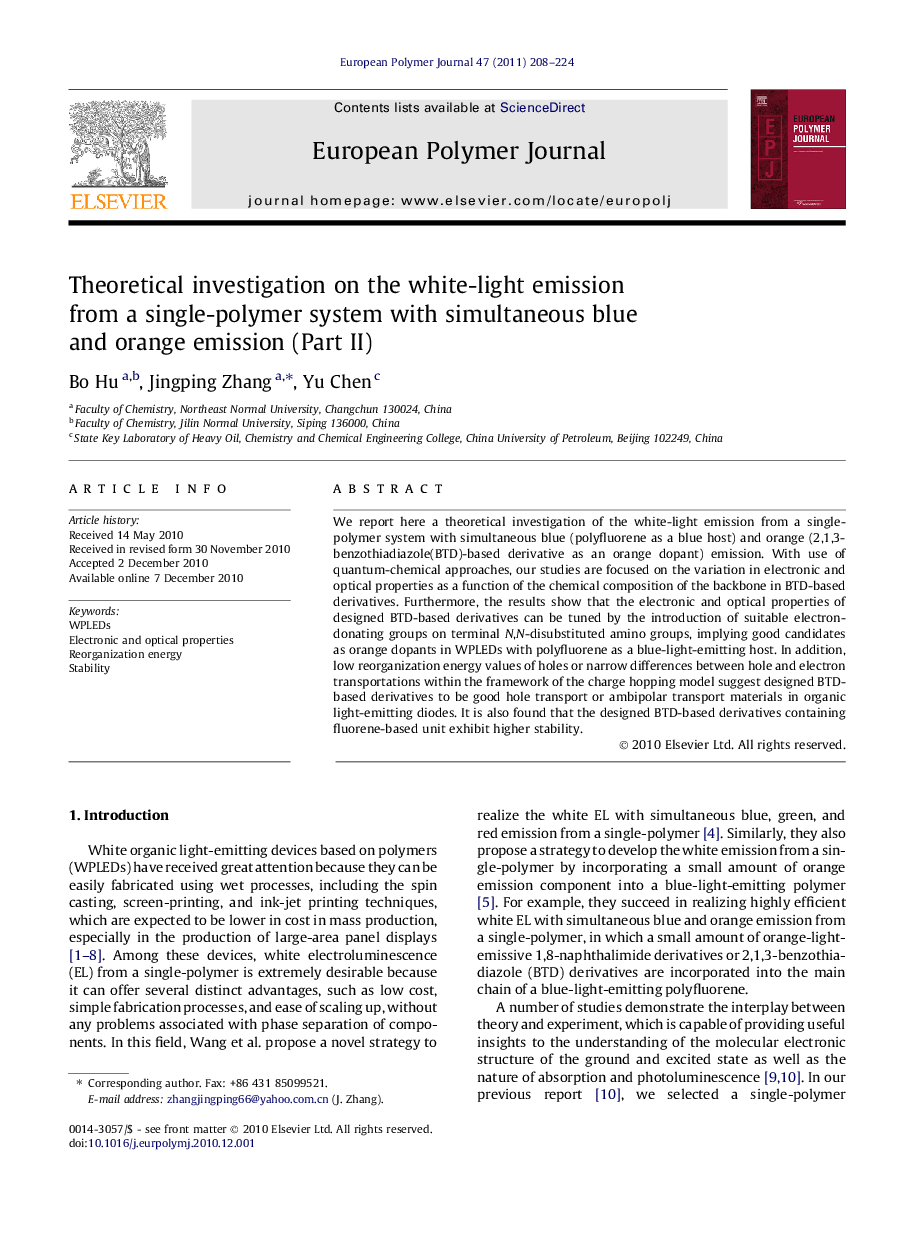| Article ID | Journal | Published Year | Pages | File Type |
|---|---|---|---|---|
| 1400692 | European Polymer Journal | 2011 | 17 Pages |
We report here a theoretical investigation of the white-light emission from a single-polymer system with simultaneous blue (polyfluorene as a blue host) and orange (2,1,3-benzothiadiazole(BTD)-based derivative as an orange dopant) emission. With use of quantum-chemical approaches, our studies are focused on the variation in electronic and optical properties as a function of the chemical composition of the backbone in BTD-based derivatives. Furthermore, the results show that the electronic and optical properties of designed BTD-based derivatives can be tuned by the introduction of suitable electron-donating groups on terminal N,N-disubstituted amino groups, implying good candidates as orange dopants in WPLEDs with polyfluorene as a blue-light-emitting host. In addition, low reorganization energy values of holes or narrow differences between hole and electron transportations within the framework of the charge hopping model suggest designed BTD-based derivatives to be good hole transport or ambipolar transport materials in organic light-emitting diodes. It is also found that the designed BTD-based derivatives containing fluorene-based unit exhibit higher stability.
Graphical abstractTheoretical investigations have been performed to explore the white-light emission from a single-polymer system with simultaneous blue and orange emission using ab initio and DFT approaches.Figure optionsDownload full-size imageDownload as PowerPoint slide
